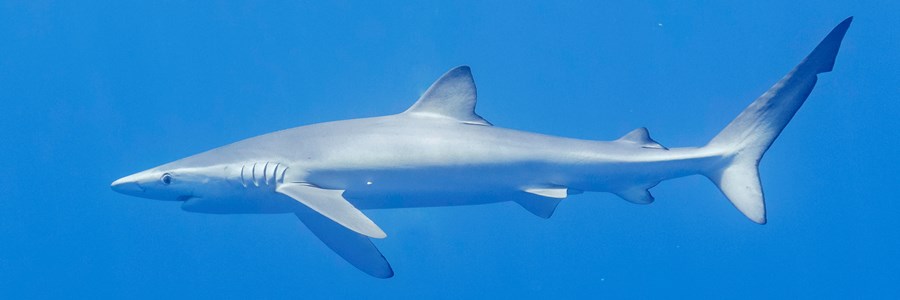Europêche rejects Panama’s proposal to include blue shark in CITES Appendix II

• Blue sharks are sustainably managed by international fisheries management bodies (RFMOs) and protected thanks to strong fins-attached policies and catch documentation schemes. • Blue sharks harvested by Europeans are in healthy conditions across the oceans and are not subject to illegal trade.
The European fishing industry represented by Europêche urges the EU not to co-sign a Panama’s proposal to include blue shark in Appendix II of CITES[1]. This country is seeking support from the international community to adopt trade restrictions for this and other shark species at the 19th Meeting of the Conference of the Parties (Panama City, 14-25 November 2022). Furthermore, according to the sector, the proposal lacks both the necessary scientific and legal basis. Blue sharks are sufficiently protected and regulated to ensure its sustainable exploitation and legal trade, rendering unnecessary additional CITES measures.
The fishing sector recognises the work of CITES to ensure that the international trade does not threaten the survival of marine species. However, the sector notes with concern that some countries like Panama consider the need to heavily restrict the commercialization of blue sharks, just because there is a “visual resemblance” with other shark species which are protected.
Daniel Voces, managing director of Europêche, declared: “Regardless of the fact that this approach completely disregards the good state, control and management of the stock, we are shocked to learn that a government is seriously considering restricting trade just because it looks like other sharks for the untrained eye. First, blue sharks, including their fins, have clearly distinguishable biological characteristics that can be verified by fisheries inspectors and DNA tests. Second, in the EU and many other parts of the world, the fins must remain attached to the body up until the place of landing. Once landed and then exported, governments issue a catch certificate that accompanies the fish up until it reaches the consumer.”
Europêche reminds that before taken a decision with an impact on commercial fish stocks, the EU is bound by the Common Fisheries Policy. This Regulation requires the EU to take decisions based on scientific advice, including a socio-economic impact assessment, and following consultation with the stakeholders. Regrettably, none of these steps have been taken so far.
Daniel Voces concluded: “The listing of blue shark in Appendix II of CITES, would bring about unnecessary red tape and adverse socio-economic effects to the fleet. The EU should instead put a stop to irrational and disproportionate proposals of dubious credibility. It should be reminded that the initiative comes from a country against which the European Commission has reissued for the second time a yellow card, warning that it is not doing enough to fight illegal, unreported, and unregulated (IUU) fishing[2].“
The EU sector has been working on a Fisheries Improvement Project (FIP BLUES[3]) since 2019, covering 90% of the EU blue shark catches. This project is the first of its kind in the world that includes the blue shark and monitors the status of the stocks, currently meeting high sustainability levels.
Abstract about blue sharks’ biology (BSH)
The biological characteristics of the species are not at all comparable to those of other species of the family or genera/species specifically named in the Panama proposal. The available scientific literature identifies BSH as the most abundant, most widely distributed, most fertile and fastest growing species of elasmobranchs, this species being one of the most tolerant to exploitation compared to other shark species, including to other species of its own family. Its reproductive strategy with average litters of about 30 individuals (but with levels of up to 60 individuals or more per litter) explains the success and high abundance of this species in different oceans, with a very wide geographic distribution.
The fin of the blue shark (Prionace glauca) is easily distinguishable, even separated from the body, due to its characteristic metallic blue coloration, because it lacks spines at the base of the fin and presents a typical indentation (keel) in the peduncle.
CITES, as any other responsible fisheries decision-making body, should analyse each species on a case-by-case basis, and not families. RFMOs such as ICCAT or IOTC, are better suited in this case to closely monitor the state and progress of blue shark stocks and to regulate the species accordingly.
ENDS
Press contacts:
Rosalie Tukker, Policy Advisor of Europêche: +32 2 230 48 48 rosalie.tukker@europeche.org
[1] CONVENTION ON INTERNATIONAL TRADE IN ENDANGERED SPECIES OF WILD FAUNA AND FLORA
[2] https://ec.europa.eu/commission/presscorner/detail/en/IP_19_6755
Sources: Europeche
Attachments:
Tags: CITES, blue shark, RFMO, iccat, IOTC, eu, Appendix II of CITES, Fin